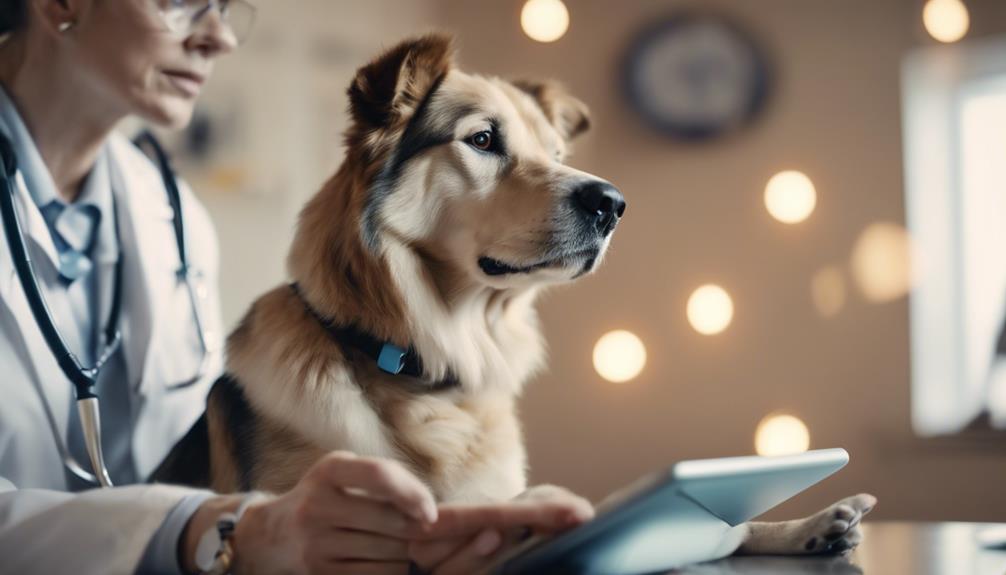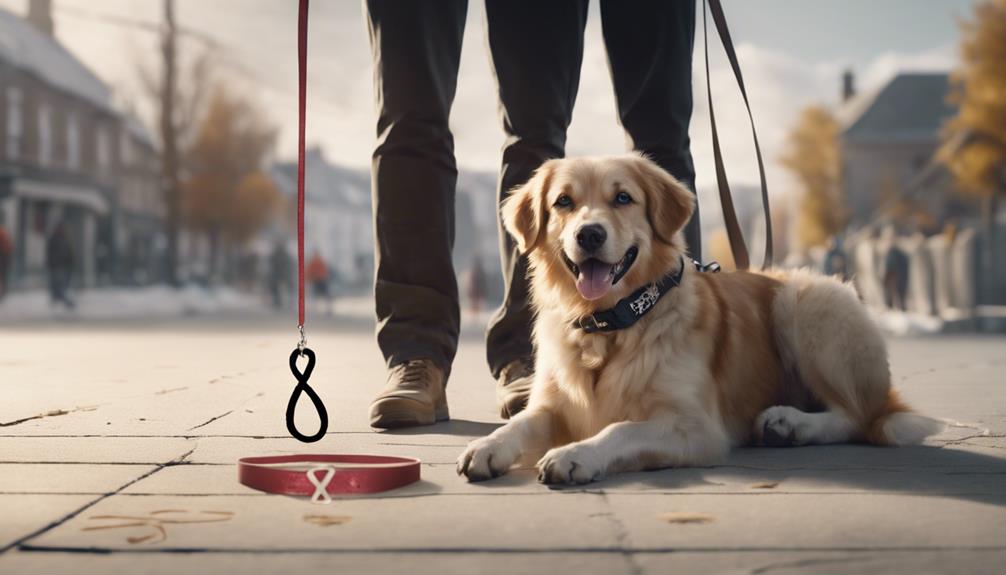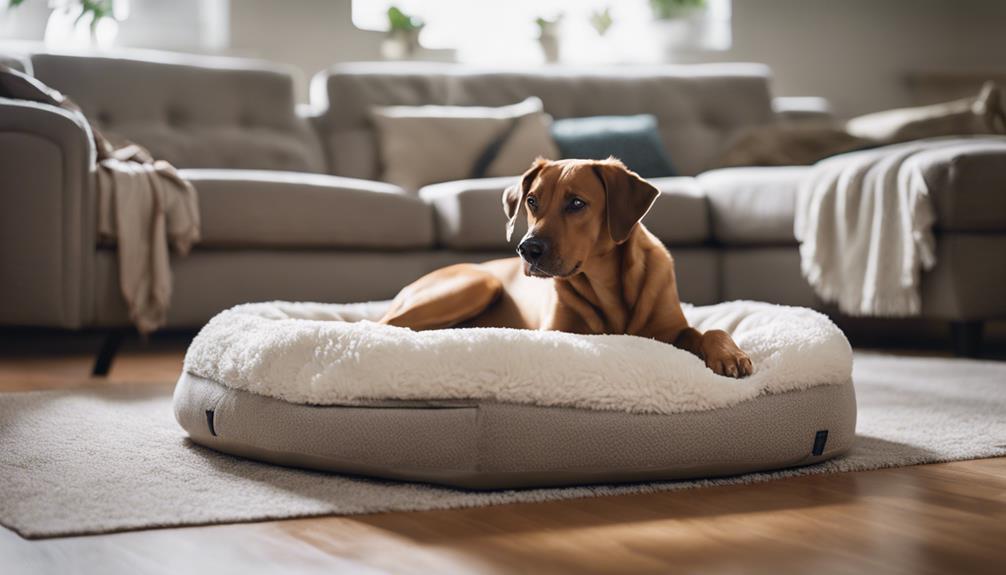Effective Dog Behavior Correction Techniques
- Advertisement -
You can effectively address dog behavior correction by first understanding the underlying causes of the unwanted actions and then applying positive reinforcement training techniques. Begin by identifying the motivations and triggers behind the behavior, and utilize operant conditioning to associate desired actions with rewards. It’s crucial to avoid punishment methods, as they often lead to anxiety and fear. Instead, focus on desensitization and counterconditioning to manage fear-based behaviors. Consistency plays a vital role in reinforcing positive behaviors and reducing unwanted ones. Research indicates that consistent training methods are crucial in mitigating behavior problems in dogs, as highlighted in this PLoS ONE study on training methods and behavior issues. By grasping the principles of habituation and extinction, you can develop a tailored approach to dog behavior correction, creating a harmonious environment that encourages good behavior. As you delve deeper into these methods, you’ll discover the secrets to strengthening the bond with your pet.
Key Takeaways
- Positive reinforcement techniques, such as clicker training, focus on rewarding desired behaviors to encourage good habits.
- Identifying underlying motivations and triggers is crucial for effective behavior modification and addressing the root causes of undesirable behaviors.
- Counterconditioning and desensitization techniques can help address behavior problems stemming from fear or anxiety by changing emotional associations.
- Consistency is key in dog behavior correction, allowing dogs to understand expectations and reducing confusion and anxiety.
Understanding Behavior Modification
When you set out to correct your dog’s behavior, it’s crucial to understand that effective dog behavior correction requires not just a surface-level approach but a deep dive into the psychology behind your dog’s actions. Dog behavior correction involves recognizing that your dog’s behavior is influenced by a complex mix of genetic predispositions and environmental factors. Grasping these influences is essential for successful behavior modification. Techniques such as positive reinforcement and operant conditioning are at the core of addressing unwanted behaviors by directly targeting their root causes. Research has shown that positive reinforcement and electronic collar training methods can have significantly different effects on dog welfare and behavior.
For instance, positive reinforcement emphasizes rewarding desired behaviors, which can lead to a stronger bond between you and your dog while encouraging good habits. On the other hand, operant conditioning links specific actions to consequences, whether they are positive rewards or negative deterrents, making it a powerful tool in dog behavior correction.
To truly succeed in modifying your dog’s behavior, it’s important to identify the underlying motivations and triggers behind their actions. This involves closely observing their behavior, identifying patterns that might suggest deeper issues, and understanding the emotional and environmental factors at play. By focusing on these aspects, you can develop a tailored dog behavior correction plan that addresses the specific needs of your dog, whether they involve particular dog breeds, specific training tools, or techniques like clicker training and reward systems.
Effective Training Techniques
Medication in Dog Behavior Correction

While effective training techniques are crucial in shaping your dog’s behavior, there are instances where additional support may be necessary, and that’s where medication in dog behavior correction becomes relevant.
As you work to address behavioral issues, you may discover that medication can be a valuable complement to behavior modification and environmental adjustments. Medication can help normalize your dog’s emotional state, making them more receptive to training and enhancing their overall trainability.
It’s particularly beneficial in managing fear-related problems, compulsive behaviors, and certain types of aggression. However, it’s important to understand the limitations of medication, such as potential side effects, cost, and the need for more comprehensive information. Moreover, the risks associated with aversive training methods should also be considered, as explored in this study on aversive training effects on dog welfare and behavior.
Moreover, it’s essential to combine medication with behavior modification and environmental changes, as relying solely on medication may not achieve the desired outcomes. Your veterinarian plays a key role in determining whether medication in dog behavior correction is appropriate for your pet and will recommend the suitable medication and dosage.
They’ll also monitor your dog’s response to medication and adjust it as needed based on their progress. The goal of using medication in dog behavior correction is not to replace behavior modification but to enhance its effectiveness and improve your dog’s quality of life.
Guiding Principles for Trainers
As you embark on the journey of dog behavior correction, it’s vital to collaborate with a qualified trainer who follows guiding principles that prioritize your pet’s well-being and ensure effective behavior modification.
A skilled dog trainer will employ positive reinforcement techniques as the cornerstone of dog behavior correction, emphasizing desensitization and counterconditioning to tackle your dog’s behavioral challenges.
They’ll steer clear of punishment and confrontation, as these approaches can lead to fear, avoidance, and heightened aggression.
When choosing a trainer, seek out those who specialize in dog behavior correction and observe an obedience class without your dog present.
Be cautious of trainers who make guarantees or discourage the use of food as a training reward.
Understanding habituation and extinction is crucial for successful behavior correction, with habituation being a long-term process that can be reversed, while extinction involves withholding rewards to eliminate undesirable behaviors.
Your trainer should be well-versed in these concepts to craft a customized training plan tailored to your dog’s needs.
Avoiding Punishment Methods

Punishment methods, which can escalate into fear and aggression, have no place in dog behavior correction, and it’s essential to steer clear of trainers who advocate for these outdated techniques.
You may think punishing your dog for bad behavior will correct it, but it can make things worse. Positive punishment, a method that involves adding an unpleasant stimulus to deter unwanted behavior, can lead to anxiety, fear, and even aggression in dogs. Studies comparing positive reinforcement and punitive methods highlight the effectiveness and potential side effects of these different approaches.
Instead of focusing on punishment, you should aim to understand the underlying causes of your dog’s behavioral problems.
What triggers the unwanted behavior? What rewards or reinforces it?
By identifying the root cause, you can develop a more effective and humane approach to correcting the behavior.
This might involve redirecting your dog’s attention, providing alternative behaviors, or addressing underlying emotional or psychological needs.
Desensitization and Counterconditioning
As you learn about desensitization and counterconditioning, you’ll discover how to reduce your dog’s fear responses by gradually exposing them to stimuli that trigger anxiety.
This process involves changing their emotional associations with these stimuli, replacing fear with calmness.
Reducing Fear Responses
By implementing desensitization and counterconditioning techniques, you can help your dog gradually overcome fear responses, replacing anxiety with calmness and confidence. These techniques are especially effective in reducing fear-related behaviors in dogs, such as fear of noises, people, or environments.
- Gradually expose your dog to the feared stimulus: Start with a low intensity and gradually increase it, allowing your dog to become comfortable and calm.
- Associate the feared stimulus with a pleasant response: Offer treats, praise, or play to change your dog’s emotional response to the feared stimulus.
- Reward and reinforce calm behavior: Proceed at your dog’s pace, avoiding overwhelming or distressing them, and reward calm behavior to reinforce confidence.
Gradual Exposure Techniques
To effectively address dog behavior correction, mastering gradual exposure techniques like desensitization and counterconditioning is crucial. These methods are particularly beneficial in overcoming fear responses and anxieties, common issues that many dog owners face.
Desensitization is a method where you slowly introduce a stimulus, such as a loud noise or being left alone, at a low intensity. This helps your dog gradually become comfortable with it over time. On the other hand, counterconditioning involves pairing the stimulus with something pleasant, like treats or praise, to create a positive association.
By combining these techniques, you can achieve effective dog behavior correction, teaching your dog to calmly coexist with the stimulus instead of merely suppressing unwanted behaviors. It’s essential to approach this process with time and patience, as rushing can be counterproductive. Consistent effort in using these gradual exposure techniques leads to a more confident and calmer dog, capable of exhibiting good behavior even in the presence of triggers.
Changing Emotional Associations
Changing your dog’s emotional associations with feared stimuli is a crucial step in overcoming behavioral issues, and desensitization and counterconditioning are powerful techniques to achieve this goal.
These techniques can help your dog associate previously feared stimuli with a calm and relaxed emotional response, rather than fear or anxiety.
- Desensitization: Gradually expose your dog to the feared stimulus at a low intensity, ensuring they remain calm and relaxed. Over time, increase the intensity while monitoring their emotional response.
- Counterconditioning: Teach your dog to associate the feared stimulus with a pleasant or calming response, such as receiving treats or praise.
- Systematic approach: Combine desensitization and counterconditioning in a controlled and gradual process, adjusting the intensity of the stimulus based on your dog’s emotional response.
Understanding Habituation and Extinction

As you explore the concepts of habituation and extinction, you’ll discover how these processes can impact your dog’s behavior.
- Advertisement -
You’ll learn about the habituation process, including how it can be reversed and the role of spontaneous recovery.
Habituation Process Explained
Your dog’s ability to habituate to stimuli is crucial in understanding how they respond to their environment, and it’s essential to grasp the underlying mechanisms that drive this process.
Habituation is a form of non-associative learning that helps your dog learn to ignore or reduce their response to specific stimuli.
This process can be influenced by factors such as the intensity, duration, and frequency of the stimulus, as well as your dog’s temperament and prior experiences.
- Stimulus characteristics: The habituation process can be affected by the intensity, duration, and frequency of the stimulus.
- Individual differences: Your dog’s temperament, prior experiences, and instincts can impact the habituation process.
- Learning and adaptation: Habituation allows your dog to learn and adapt to their environment, reducing unwanted behaviors such as fear or anxiety responses to specific stimuli.
Understanding Extinction Burst
When you suddenly remove or withhold a stimulus your dog has learned to respond to, they may exhibit an extinction burst, a temporary increase in the frequency or intensity of the previously habituated behavior.
This can be a challenging phase, as it may seem like the problem behaviors are getting worse. However, it’s essential to understand that this behavior increase is a normal part of the extinction process.
During an extinction burst, your dog may exhibit more aggressive behavior, such as barking or growling, as they try to get your attention or the desired outcome.
It’s vital to remain calm and consistent, avoiding reinforcement of the undesired behavior. If you give in to your dog’s demands during this phase, you’ll only prolong the extinction process.
Long-Term Behavior Change
Achieving long-term behavior change in your dog requires a thorough understanding of habituation and extinction, two fundamental concepts that can help you overcome unwanted behaviors and replace them with desirable ones. By grasping these concepts, you’ll be better equipped to address persistent issues and create a more harmonious relationship with your pet.
- Habituation is reversible: If your dog has learned to associate a stimulus with a particular response, they can revert to their original behavior if the stimulus is reintroduced after a long period.
- Overlearning delays extinction: By continuing to reinforce desired behaviors, you can increase resistance to extinction and make them an automatic response for your dog.
- Spontaneous recovery is possible: Even if your dog appears to have overcome an unwanted behavior, they may still exhibit it again after a long period if they’re exposed to the same stimulus.
Importance of Consistency
Establishing a consistent routine helps you set clear expectations for your dog, which is crucial for effective behavior correction. By doing so, you create a protocol to help your dog understand what’s expected of them, reducing confusion and anxiety. Consistency is key in dog behavior correction, as it allows your dog to know what to expect from you every time.
Take a look at your daily routine and identify areas where you can establish a consistent protocol. For instance, if you want your dog to stop barking at the door, establish a consistent routine for greeting visitors.
To achieve consistency, know your dog’s strengths, weaknesses, and triggers. Understand what motivates them and what causes them to misbehave.
By understanding your dog’s behavior, you can develop a tailored approach to correct unwanted behavior. Consistency also applies to rewards and punishments. Every time your dog exhibits good behavior, reward them with treats and praise.
Conversely, every time they misbehave, correct them with a firm but gentle tone. Remember, consistency isn’t about being perfect; it’s about being consistent in your approach.
Creating a Harmonious Environment

By cultivating a harmonious environment, you empower your dog to thrive, releasing their full potential and paving the way for successful behavior correction.
This is a good idea, as it allows dogs and people to coexist peacefully, fostering trust and respect. A harmonious environment is essential for effective dog behavior correction, as it helps reduce fear and anxiety, common causes of aggression, and other behavior problems.
- Clear structure and communication: Establish a clear routine and communicate effectively with your dog, using positive reinforcement techniques to reward good behavior.
- Stay calm and patient: Avoid physical and psychological intimidation, instead, stay calm and composed, even in challenging situations.
- Reward the behavior: Focus on rewarding desirable behaviors, rather than punishing undesirable ones, to encourage positive habits and discourage negative ones.
Frequently Asked Questions
What Is the Best Method of Dealing With a Dog’s Behavioral Issues?
Did you know that 85% of dog owners consider their pets part of the family?
When dealing with your dog’s behavioral issues, it’s essential to avoid punishment, as it can exacerbate problems.
Instead, consider your breed’s unique traits, your mindset, and how environmental factors impact your dog’s emotions.
How to Properly Correct Bad Dog Behavior?
When correcting bad dog behavior, you’ll want to focus on consistent reinforcement and positive reinforcement.
Immediate intervention is key, as it addresses issues before they escalate.
Gentle correction and clear communication are essential in conveying what’s acceptable and what’s not.
By setting boundaries and rewarding good behavior, you’ll help your dog understand what’s expected of them.
What Are the Behavioral Modification Techniques for Dogs?
Approximately 77% of dog owners report behavioral issues in their pets.
When it comes to modifying your dog’s behavior, you have several effective techniques at your disposal.
Desensitization Training helps dogs gradually adjust to stimuli, while Counterconditioning Methods associate unpleasant stimuli with positive outcomes.
Positive Reinforcement encourages good behavior, Habituation Techniques reduce responses to stimuli, and Exposure Therapy helps dogs overcome fears.
What Are the Methods of Correction for Dogs?
When correcting your dog’s behavior, you’ll find several methods effective.
Positive Reinforcement rewards desired actions, while Redirected Attention shifts focus away from unwanted ones.
Verbal Cues, such as ‘no’ or ‘quiet,’ can also be used.
Body Language, like a firm stance or gentle touch, conveys authority and calmness.
Consistent Consequences, like removing privileges, help your dog understand what’s expected.
Conclusion
By mastering effective dog behavior correction techniques, you’ll be able to transform your furry friend from a chaotic whirlwind of destruction into a calm, obedient companion.
Imagine strolling through the park with your dog by your side, effortlessly ignoring distractions, and responding promptly to every command.
With consistency, patience, and the right approach, you can create a harmonious environment where your dog thrives, and your sanity is preserved.
By applying these techniques, you’ll access a stronger, more loving bond with your dog and a lifetime of joyful memories.
- Advertisement -

